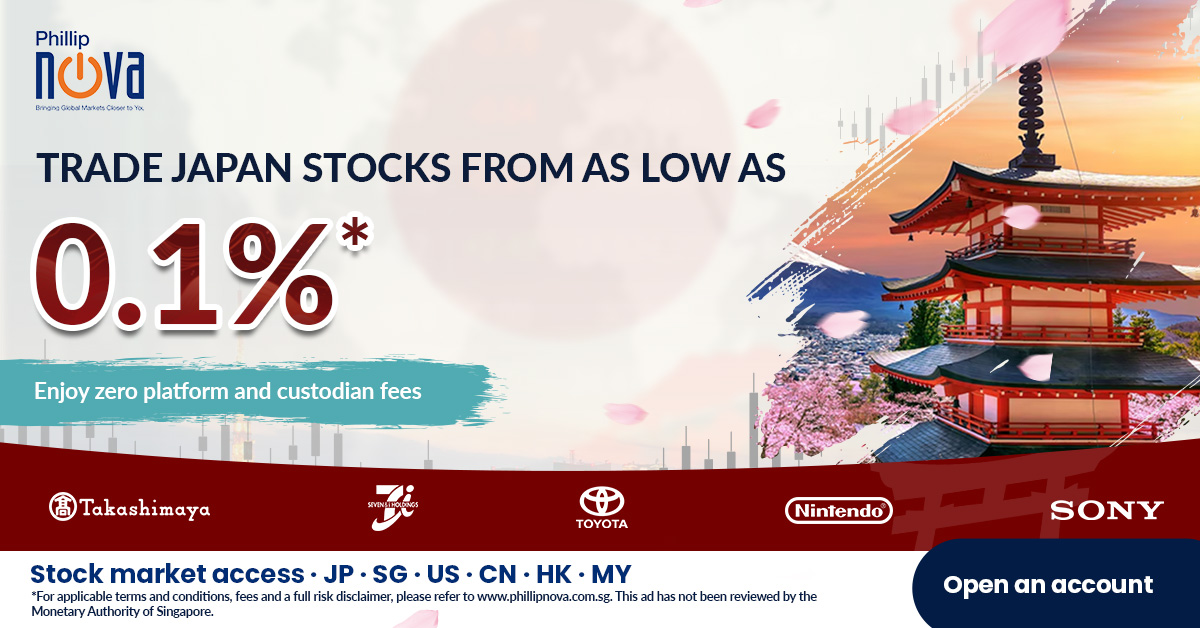By Danish Lim, Senior Investment Analyst for Phillip Nova
The world’s greatest investor and CEO of Berkshire Hathaway, Warren Buffett, has finally stepped down after 60 years at the helm. He broke the news at the annual shareholder address and has appointed Greg Abel as his successor. While there were many key takeaways from his most recent shareholder address, the one thing that stood out to us was that Buffett has strong views on the Japanese market and has no plans to reduce his holdings (Buffett is famous for his views on long-term investing and leveraging interest from long term carefully curated holdings). Berkshire Hathaway first grabbed headlines with their initial investments in Japanese trading houses (Itochu Corp., Sumitomo Corp., Marubeni Corp., Mitsubishi Corp., and Mitsui & Co.) in July 2019. They subsequently increased their holdings in March 2025. What are some of the reasons for their strong conviction in the Japanese markets?
1) Lower price to earnings (P/E) ratio versus the US markets
Compared to the highly traded US markets, the Japanese markets have a lower price to earnings (P/E) ratio than the US markets. For example, the P/E ratio for Netflix is 53.77 versus 35.51 for Fast Retailing.
2) Strong balance sheets and improving corporate governance
The other key value proposition of the Japanese markets would be their high corporate governance and strong financial record. Strong corporate governance ensures that the company is run responsibly, with high accountability and transparency to the shareholder. One of the key objectives of a company with strong corporate governance is focusing resources on protecting shareholder interest and fostering long-term sustainability.
3) Attractive valuation with share buybacks and dividends
The other value proposition for the Japan markets would be its attractive valuation versus the expensive US markets. Japanese stocks are also known to conduct share buybacks, when applicable, which drives up earnings per share, and they typically provide dividends which would be appealing to the long term investor.
Now that we have gained an understanding of why Warren Buffet is bullish on the Japanese markets, let’s now explore some key sectors in the Japanese markets.
Tech Dominance & AI Exposure
The Nikkei 225 index is actually more tech-heavy than the S&P 500: ~50% of the index is tech vs ~30% for the S&P.
- This makes the Nikkei highly sensitive to global AI trends.
Key stocks:
- Advantest (TSE: 6857): Makes semiconductor testing devices (ATE).
- Tokyo Electron (TSE: 8035): Produces semiconductor production equipment.
- Softbank (TSE: 9984): Investment holding company with tech exposure via portfolio companies and Stargate AI.
The Nikkei volatility this year has been driven largely by the cooling AI trade and trade risk exposure, especially China.
- E.g., Tokyo Electron derives ~43% of its revenue from China —thus, vulnerable to US-China trade war
Industrial Robotics & Machinery (Potential “Dark Horses”)
- Fanuc (TSE: 6954) and Yaskawa Electric (TSE: 6506): Robotics companies used in automation and manufacturing.
- Kawasaki Heavy Industries (TSE: 7012): Diversified industrial firm producing ships, aircraft, defense equipment, motorcycles. Also expanding into hydrogen energy and robotics.
Cybersecurity & E-commerce Outperformers
- Trend Micro (TSE: 4704): Cybersecurity stock benefiting from rising digital threats.
- Mercari (TSE: 4385): Top performer in the Nikkei; runs a C2C e-commerce app with integrated logistics (via Merlogi). Growth driven by consumer shift to second-hand goods amid cost-cutting.
Safe Havens from AI/Tech Disruption (but NOT trade tensions)
Video Game Publishers: Surprisingly Defensive
- Despite being in tech, game companies like Bandai Namco (TSE: 7832), Konami (TSE: 9766), Nintendo (TSE: 7974), and Sony (TSE: 6758) are emerging as relative safe havens.
- These firms don’t rely on advanced chips or data centres
- Bandai Namco (TSE: 7832): Among top YTD performers; strong IP catalog (Dragon Ball, Naruto, One Piece, etc.).
- Benefits from recurring revenue from fans buying games, toys, merchandise.
- Multi-platform monetization supports resilience even in weak markets.
Potential Safe Havens from Tariffs:
Domestic-Oriented Sectors
- In previous trade war cycles (e.g., 2018), domestic sectors outperformed export-heavy names.
- Key examples: Retail, finance, construction, defense
- Ryohin Keikaku (TSE: 7453), who generates majority of revenue outside of the US
- Oriental Land (TSE: 4661) – Tokyo Disney Resort operator
- Railway companies like JR East (TSE:9020), JR West (TSE: 9021), JR Central (TSE: 9022), and private lines like Odakyu (TSE: 9007) and Keio (TSE: 9008)
Value & Dividend Plays to Benefit from higher BOJ rates
If you are a fan of Warrant Buffett investment philosophy and would like to explore value stocks in Japan, you would be pleased to know that value and high-yield stocks have outperformed this year.
- Rising rates favour value over growth due to predictable cash flows.
- ETF option: iShares MSCI Japan Value ETF (NSDQ: EWJV).
- Individual stocks: Nippon Steel (TSE: 5401), JFE Holdings (TSE:5411), and major Japanese banks offer high dividends.
Japanese Banks
- Rising Rate Tailwinds & Strong Payouts
- Higher interest rates benefit Japanese banks via better net interest margins (NIM).
- Major banks like MUFG (TSE: 8306), Mizuho (TSE: 8411), SMFG (TSE: 8316) have raised profit forecasts and announced buybacks.
- Mizuho’s (TSE: 8411) CEO noted a shift from capital buildup to balancing shareholder returns with growth.
Examples of progressive dividend policy:
- Tokyo Gas (TSE: 9531) saw a 7% share price jump after committing to maintaining or increasing dividends annually.
- Ongoing corporate governance reforms and shareholder activism continue pushing for better payouts.
Japanese stocks and ETFs to watch
1) Global X Hotel & Retail J-REIT ETF (TSE: 2098)
This ETF tracks the Tokyo Stock Exchange REIT Hotel & Retail Focus TR Index, providing exposure to J-REITs that invest in hotel and retail properties. The hotel and retail sectors are well-positioned to benefit from Japan’s inbound tourism boom — boosting demand for hotel stays and retail spending. The ETF offers low correlation (0.30 to the STI and 0.28 to the S&P 500) to Singapore and US equities, enhancing portfolio diversification.
2) Global X Japan Games & Animation ETF (TSE: 2640)
This ETF tracks the Solactive Japan Games & Animation Index GTR, offering exposure to Japanese stocks involved in video game development & publishing, anime, manga, esports, and streaming. Companies with strong IPs have emerged as a tech safe haven as they don’t rely on chips or data centers. Firms like Bandai Namco and Nintendo benefit from fan loyalty and multi-platform monetization via games, merchandise, theme parks, and films. While hardware names like Sony and Nintendo face some tariff risk, strong franchises (e.g., Super Mario, Dragon Ball, Last of Us) support demand resilience.
3) iShares Core Nikkei 225 ETF (TSE: 1329)
This ETF tracks the Nikkei 225 Total Return Index, providing exposure to large cap Japanese equities. Top holdings include UNIQLO parent Fast Retailing, Tokyo Electron, Advantest, and Softbank Group. Dividends are distributed semi-annually. Tariffs remain a key headwind as the US is Japan’s largest export market. Nevertheless, there is upside potential in the event tariffs can negotiated down, as US officials have said that Japan will get priority in trade talks. Fundamentally, rising real wages in Japan may potentially boost consumer spending and sentiment.
4) Ryohin Keikaku Co Ltd (TSE: 7453)
Ryohin Keikaku operates as a retailer of MUJI (Mujirushi Ryohin) brand products. It is one of the best performing stocks this year despite tariff headwinds, up +14.01% MTD, vs a decline of -4% in the Nikkei 225. This is because the Americas account for <5% of total revenue, suggesting that the impact of US tariffs may be relatively limited. 1H25 profit surged 61.6% YoY. Domestic Japan revenue rose 22% YoY, led by strong growth in Housewares (+40% YoY, now 7% of sales) and Health & Beauty (+40% YoY, now 21% of sales).
5) Bandai Namco (TSE: 7832)
Bandai operates in 4 segments– 1) Digital Business (35%) which includes games like Elden Ring, Tekken, and Dark Souls ; 2) Toys & Hobby (47%) which covers Gundam action figures; 3) IP Production (7%) which generates recurring income from licensing deals; and 4) Amusement (11%) which focuses on arcades. While AI-related shares have slumped, video game companies with strong IPs have emerged as a safe haven as they don’t rely on chips or data centres. Bandai’s key strength lies in its powerful IP lineup which includes Dragon Ball, Naruto, One Piece, and Jujutsu Kaisen. Demand is resilient as fans regularly purchase new releases and limited-edition products. Bandai has been able to monetize its in-house IP across multiple platforms via video games, toys, film– creating multiple revenue streams.
6) Nintendo Co Ltd (TSE: 7974)
Nintendo shares have soared in the buildup to the June 5 launch of the Switch 2. It is expected to be the biggest console launch in the history of gaming, with a higher price ($450 in the US) than its predecessor. The Switch 2 will benefit from being backward-compatible, potential support for 3rd-party games like Call of Duty, franchise releases (Pokemon Legends: Z-A) coinciding with the launch, and powerful in-house IPs such as Mario Kart to sustain demand for the console beyond the initial launch. Nintendo is exposed to tariff risks as most of its Switch hardware is assembled in China and Vietnam. US Sales made up ~40% of revenue. But the recent 90-day tariff pause provides a window for Nintendo to stockpile inventory in the US before tariffs resume, helping avoid extra costs.
7) Fast Retailing Co Ltd (TSE: 9983)
Fast Retailing operates multiple fashion brands including UNIQLO and lower-priced sister brand GU. It operates in 4 key segments– 1) UNIQLO international, 2) UNIQLO Japan, 3) GU, and 4) Global Brands. A cold wave and record snowfall could spur stronger sales of Winter clothing. 2Q FY2025 earnings are due on 10 April. Fast Retailing’s operating margin has historically been above that of peers H&M and Gap due to its emphasis on basic clothing rather than fast fashion which has resulted in retail markdowns for H&M and Gap.

Trade Japan Stocks on Phillip Nova 2.0 now
Capture opportunities in value and dividend stocks in the Japanese market now! Click here to open an account now!
Trade CFDs, ETFs, Forex, Futures, Options, Precious Metals, and Stocks with Phillip Nova 2.0
Features of trading on Phillip Nova 2.0
- Gain Access to Over 20 Global Exchanges
Capture opportunities from over 200 global futures from over 20 global exchanges
- Trade Opportunities in Global Stocks
Over 11,000 Stocks and ETFs across Singapore, US, China, Hong Kong, Malaysia and Japan markets.
- Charting Powered by TradingView
View live charts and gain access to over 100 technical indicators
- True Multi-Asset Trading
Trade CFDs, ETFs, Forex, Futures, Options, Precious Metals and Stocks on a single ledger on Phillip Nova 2.0










